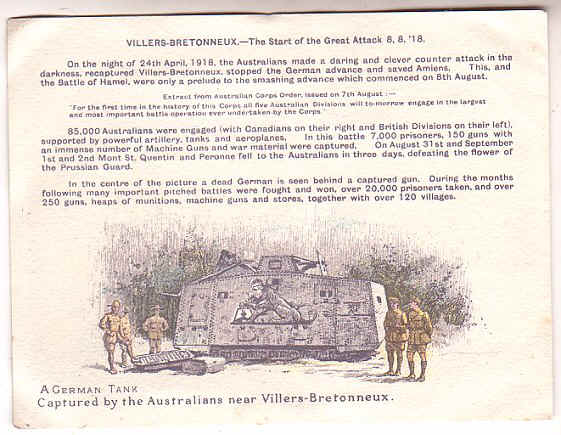|
Precis.
In March 1918, the German
people were close to starvation and growing tired of the war. With
the collapse of the Russian Front, and the imminent arrival of American
troops to assist the Allies on the Western Front, German Commander,
Erich von Ludendorff, decided to attack the weakest part of the British
lines near the Somme River. On 21 March 1918, "Operation
Michelle" was launched and by 5 April 1918, the Germans had gained
60 kilometres of territory before their progress was halted.
On 9 April 1918, another
offensive "Operation Georgette" was launched against the
British lines near Armentieres with the intention to push the British
troops to the English Channel. By 29 April strong resistance by
the British had blocked the German advance. On 27 May 1918, the
Germans launched a third offensive near Reims and by July had reached
the Marne River, 70 kilometres from Paris.
Although the German army
had made great advances, after three months of fighting their soldiers
were fatigued and were weakened by an outbreak of influenza in June. The
great advances had strained supply lines and the morale of the troops
was lowered. By mid July the German army was in retreat.

On
8 August the Battle for Amiens (also known as the Third Battle of the
Somme) commenced when a combined Australian, British and Canadian forced
attacked the Germans eastwards from Villers-Bretonneux. The
offensive broke the German line so thoroughly that most of their field
artillery was overrun and captured.

-
The Allied troops advanced 10
kilometres on the first day of fighting which prompted Erich von
Ludendorff to label it 'the black day of the German army'. By 11 August
over 30,000 German prisoners had
been captured. At the
conclusion of the Battle for Amiens on 28 August 1918, the Australian
casualty toll exceeded 6,500.
|